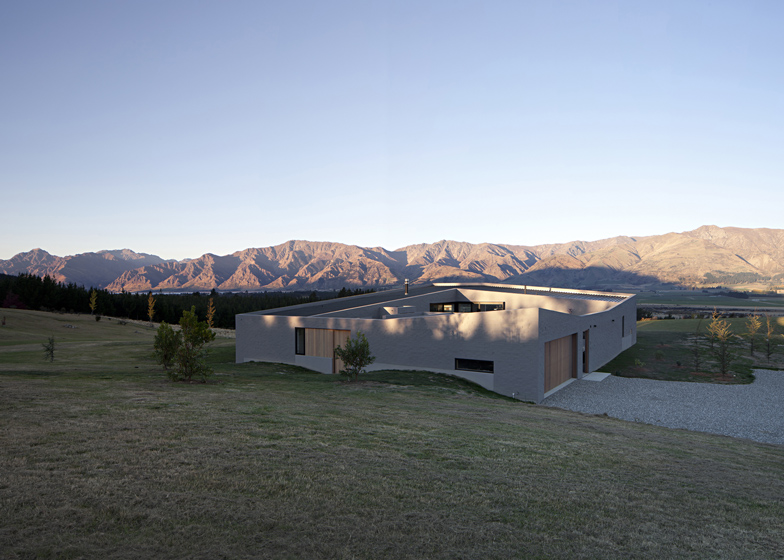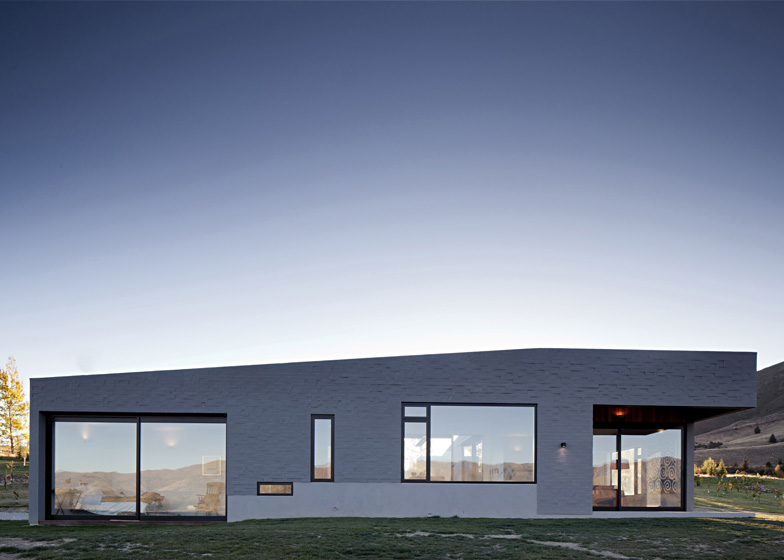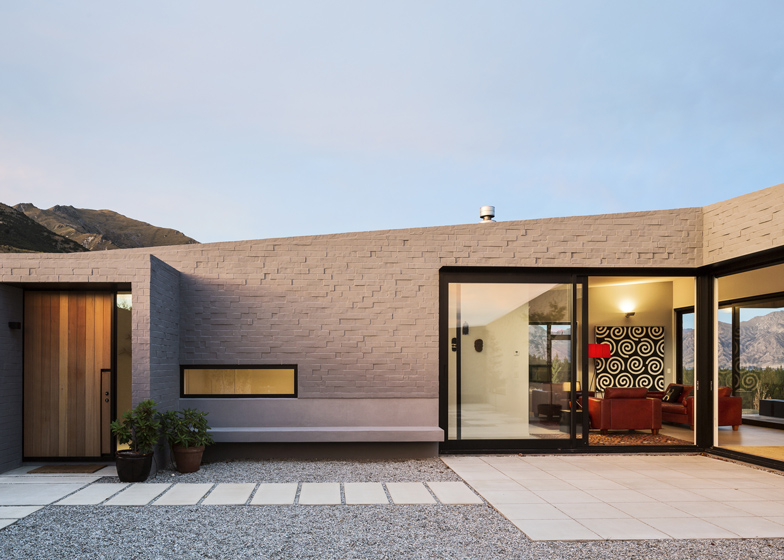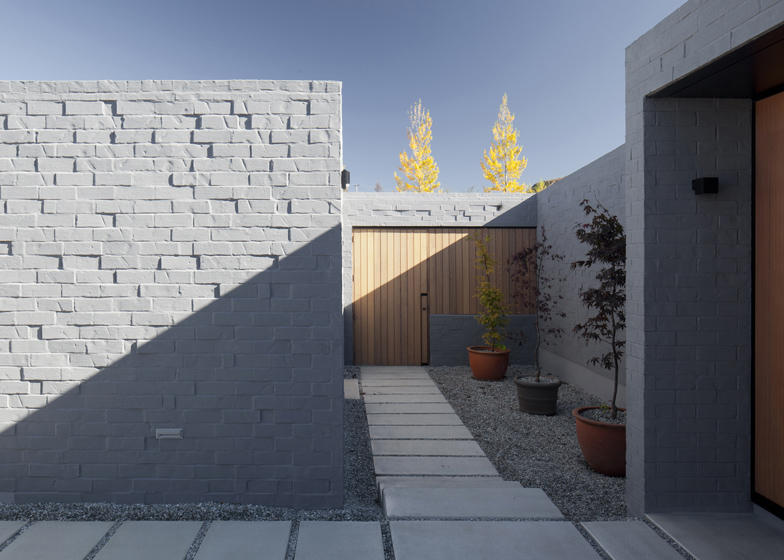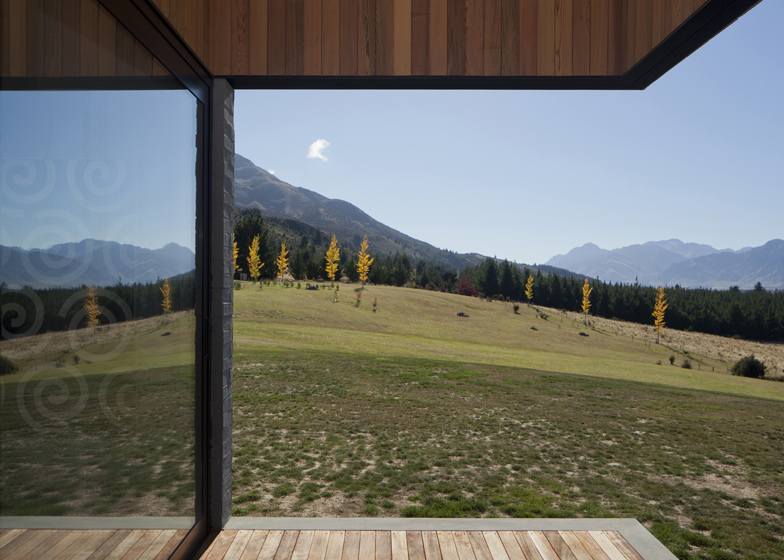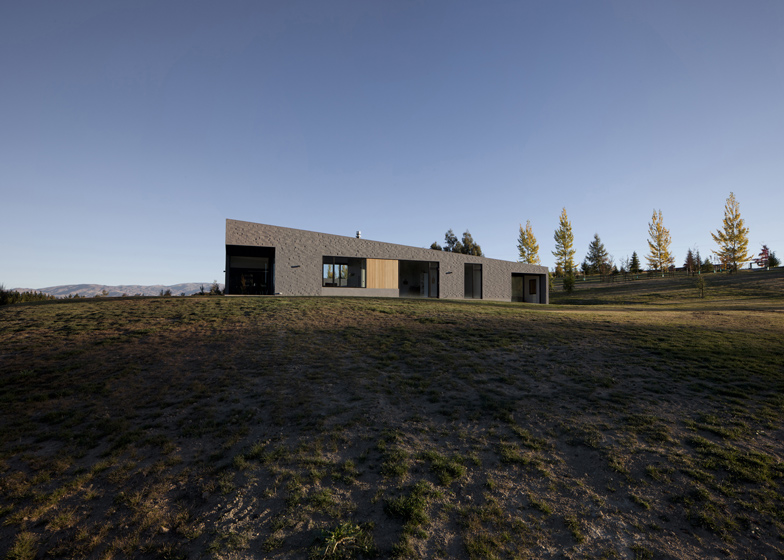This brick courtyard house by Auckland studio Glamuzina Paterson Architects sits at the foot of a mountain in New Zealand's Otago region (+ slideshow).
Lake Hawea Courtyard House was designed by Glamuzina Paterson Architects as a rural home for a retired couple, who requested a building that "sits on the ground with weight and permanence".
Occupying a square plot, the single-storey house has an L-shaped plan that folds around the north and east sides of a secluded central courtyard, allowing morning and afternoon sunlight to penetrate the interior spaces.
The walls are constructed from uneven bricks, giving a bumpy texture to the outer surfaces, and large recesses are infilled with a mixture of timber panels and glazing.
"The house is an enquiry into where a site begins and ends," said the architects. "The use of rusticated bricks creates a material relationship with the site and anchors it firmly to the ground, along with a textural palette that allows for a constantly shifting interpretation of scale."
Alongside the usual living, dining and bedroom spaces, the architects added a music room and a quiet room, designed to accommodate the residents' various hobbies.
Entrances to the house lead in through the courtyard, plus a garage in the site's south-west corner offers parking spaces for a pair of cars.
Other interesting houses from New Zealand include a guesthouse with walls of Corten steel and a residence that can be towed off the beach. See more architecture from New Zealand »
Photography is by Samuel Hartnett, apart from where otherwise stated.
Read on for a description from Glamuzina Paterson Architects:
The Lake Hawea Courtyard House
The Lake Hawea Courtyard House is grounded in rural land at the foot of Mount Maude in the Otago region. The house is an enquiry into where a site begins and ends - how to define the edges of the project and the way that landscape may be inhabited.
Firmly dug into the earth, its low form and simple square plan recalls the modest language of early settler buildings in the region that utilise low slung, stone construction to deal with the extreme environment.
This idea of a singular form clad with simple materials, drove the exploration into the material and formal qualities of the house.
In their written brief the clients requested "a building not built on a domestic scale, that might have been part of a bigger building that sits on the ground with weight and permanence".
The couple planned to retire to the house so spaces were described by unusual titles, such as the quiet room and the music room that represented their respective hobbies.
The brick amour of the Courtyard facade wraps the house and large central courtyard, framing views to the lofty mountains and low plains.
Living, dining and sleeping spaces occupy the northern and eastern edges, favouring the predominant direction of the sun, while niches and overhangs in the building envelope protect it from the hot, dry summers and harsh winters.
The courtyard bunkered in the landscape responds to the immediate context within which it is placed and allows the building to address continuous enclosure and protection from the prevailing north-east wind. The use of rusticated bricks creates a material relationship with the site, and anchors it firmly to the ground, along with a textural palette that allows for a constantly shifting interpretation of scale. The strategies of shifting roof planes and concrete floor plates enables the house to articulate the relationship of form to land, this in turn is mediated by a plinth that is expressed as a low recessed wall wrapping around the building connecting the mass to the ground and acting as an organisational tool for apertures.
As Ted McCoy once commented: "The good thing about isolation [is that] one had to learn for oneself, by looking at surroundings." The courtyard house reflects these values.



